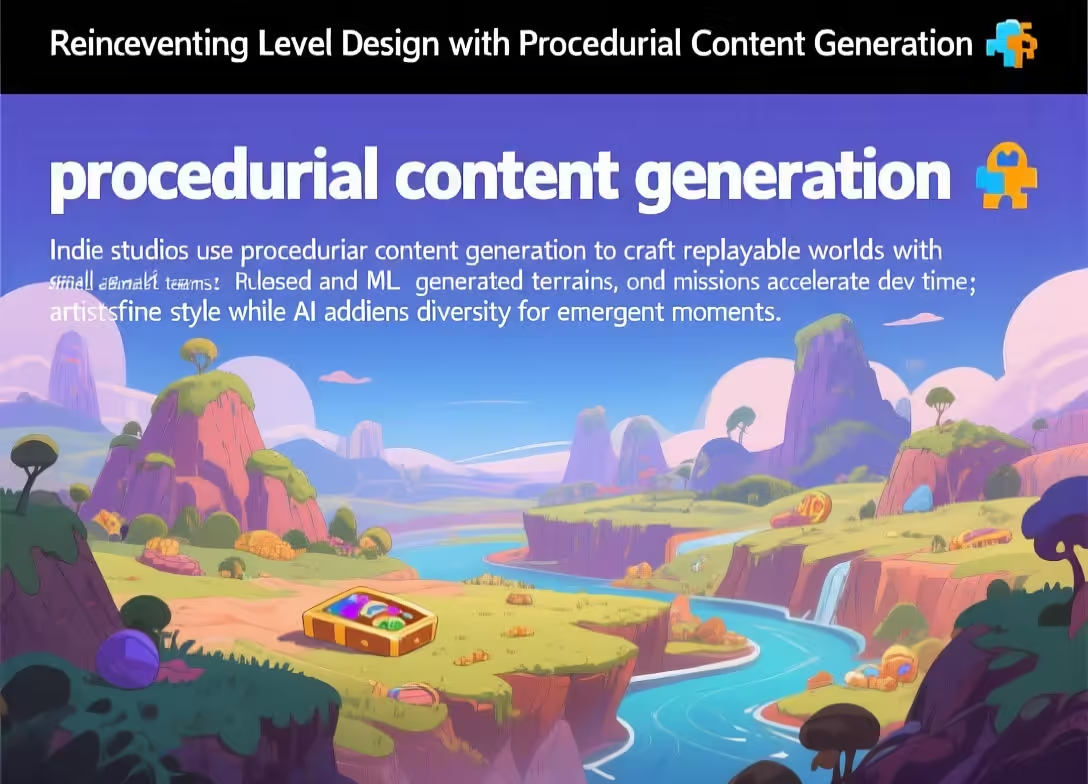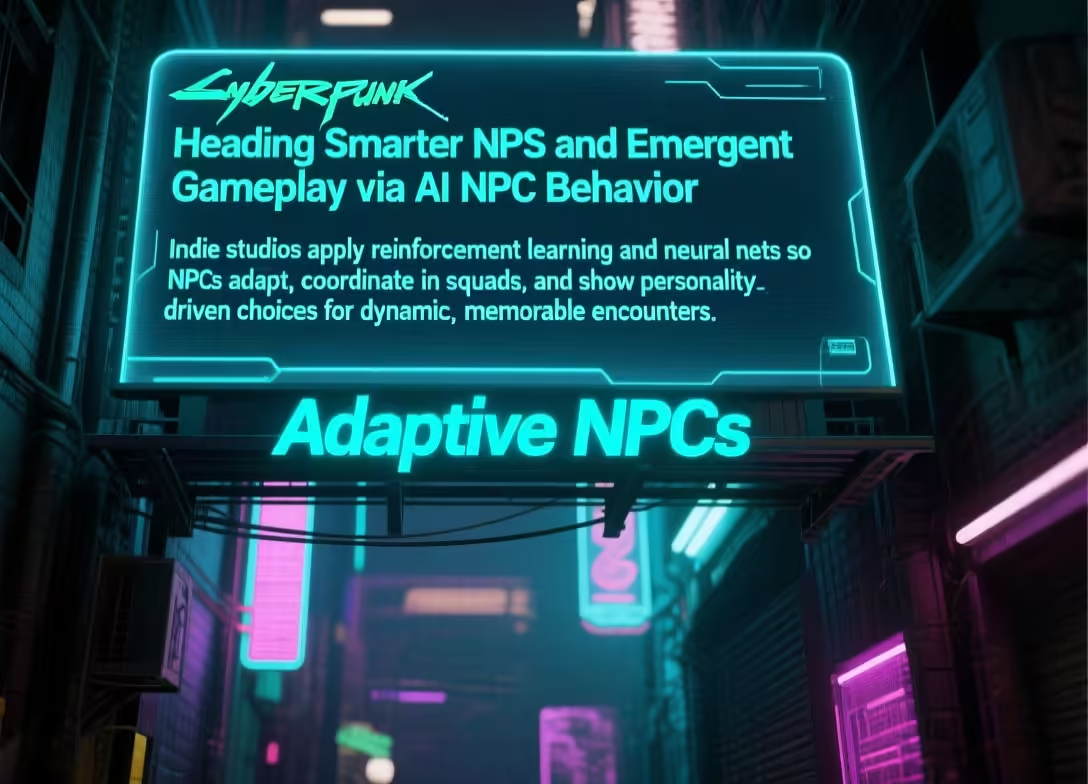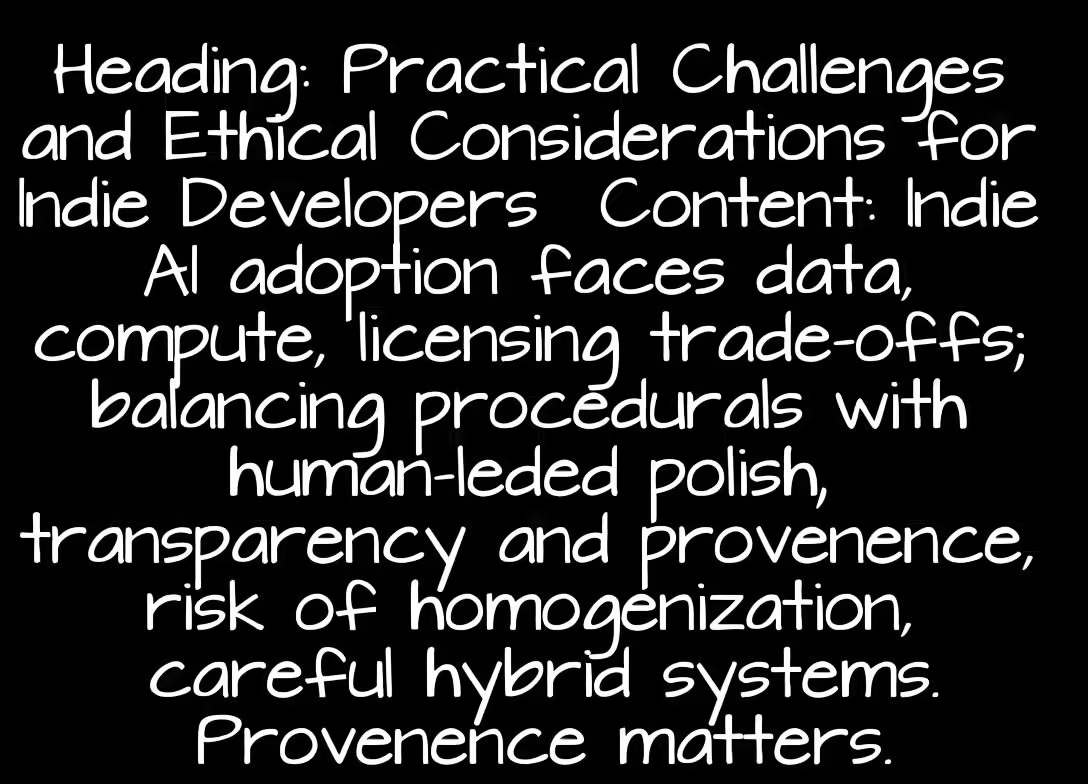4. Reinventing Level Design with Procedural Content Generation 🎮
Indie studios are harnessing procedural content generation to produce vast, replayable environments without hiring large art teams. By combining rule-based algorithms with machine learning models, developers generate terrains, loot distributions, and mission layouts that feel handcrafted but are created on the fly.
This approach reduces development time and allows small teams to iterate rapidly on player feedback, tailoring procedural parameters to player behavior and engagement metrics. The result is a pipeline where artists set stylistic constraints and AI fills in the diversity, creating emergent gameplay moments that keep players returning.
( (Source)

3. Smarter NPCs and Emergent Gameplay via AI NPC Behavior 🤖
One of the most visible effects of AI in gaming at indie scale is improved non-player character behavior. Instead of scripted patterns, studios apply reinforcement learning and neural networks so NPCs adapt to player tactics, coordinate in squads, or even exhibit personality-driven choices.
This makes encounters less predictable and more narratively rich, turning routine combat or interaction into memorable set pieces. Smaller teams can now prototype complex AI behaviors using open-source frameworks and cloud compute, translating academic advances in machine learning in games into practical NPC systems that enhance difficulty curves and player immersion.
( (Source)

2. Content Tools That Supercharge Art and Audio Production 🎨🎧
AI-assisted tools are lowering the barrier for indie creators to produce high-quality assets. From texture synthesis and procedural animation to AI-driven music composition, these systems let teams generate base assets fast and then refine them with human oversight.
For example, neural networks can produce variations of object models or generate ambient soundscapes that adapt to level state, reducing repetitive work and enabling smaller studios to punch above their weight in polish. Using AI for art and audio does not replace artists; instead, it amplifies creative decisions, freeing talent to focus on distinctive touches rather than mechanical repetition.
( (Source)

1. Practical Challenges and Ethical Considerations for Indie Developers ⚖️
Adopting artificial intelligence in gaming also brings trade-offs: data needs, compute costs, and content licensing questions. Indie teams must balance the benefit of procedurally generated volume against the risk of homogenization if models are trained on similar datasets.
There’s also player expectation—procedural systems can produce bugs or edge-case behaviors that harm the experience if not rigorously tested. Ethical concerns around training data provenance and the use of generative models for likenesses or music require careful policy and transparent crediting.
Smart indies mitigate these risks by creating hybrid systems that use AI for scale while keeping final gates and narrative intent firmly human-led. (Conclusion AI in gaming gives indie studios a multiplier: procedural content generation, smarter NPCs, and AI-assisted art let small teams produce ambitious, replayable experiences with limited resources.
The next wave will be defined by studios that pair algorithmic scale with strong editorial control—blending machine efficiency with human judgment to create games that feel both vast and meaningful. (Source)

